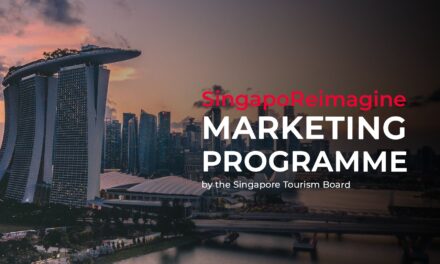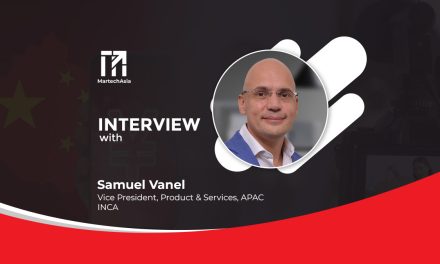Are you reaching out to your offline customer? If not, then hear it from Karam Malhotra, Partner, Global Vice President, SHAREit Group, in this exclusive interview who explains why they matter and how to reach out to them.
Karam Malhotra is the Partner, Global VP at the SHAREit Group, a global internet technology company with a diversified suite of applications, including the hero app SHAREit, a file-sharing, gaming, and content streaming platform, which has been installed by nearly 2.4 billion users worldwide.
Based in Singapore, he helms the global sales team, formulates strategy, and builds the business ecosystem for SHAREit across the globe. Under his leadership, the SHAREit app has been ranked #2 globally in terms of downloads amongst SEA headquartered media publishers in App Annie’s Level Up Top Publisher Awards 2021. A graduate of Kellogg School of Management, he has worked at McKinsey London, and is a passionate entrepreneur, having co-founded two businesses – FastFilmz, a mobile entertainment platform, and Greatest Common Factor, an ed-tech company.
In this interview with MartechAsia, he explains why offline customer matter in Southeast Asia and how businesses can reach out to them.

How do you see the “connected consumer”?
A connected consumer lives on digital platforms, is surrounded by connected devices and active on real time communication tools like messaging apps. Connected consumers may range from the young digital natives snapchatting their #ootd to baby boomers looking for an online doctor. They are diverse in terms of where they come from, their interests and needs, but at the same time there are commonalities in their behaviours. Mobile devices have given the connected consumers a new dimension – they could be reading on their phones while in transit or checking reviews of a product, as the salesperson at an electronic store, sells to them. Connectivity is a constant state of being and not anything that comes and goes.
Despite this, there are populous markets where connectivity is not a given. Broadband and internet connections might be weak or not present in deeper pockets of the Philippines and Indonesia amongst others. The Southeast Asian region encompasses about 643 million people in 10 nations who have different levels of digital maturity.
Are there brands that are looking beyond the connected consumers? How can they connect with their offline potential consumer?
While there has been a rapid adoption of digital technologies by Southeast Asia’s businesses and a rise in affluent consumers, efforts are still underway to expedite this digitalisation journey. As this happens, businesses still have to grapple with the challenge of reaching those who cannot be categorised as the ‘connected consumer’. Communities residing in areas where a good internet connection is an issue, are real even in this day and age, and these comprise huge numbers that are consuming content in native languages. The SHAREit app houses a vast variety of video content in native languages which we have seen gain immense popularity.
Mobile has been the safe haven for these brands to engage their target audience, especially considering the challenges covid-19 has posed. Skyrocketing smartphone adoption rates have made Asia Pacific, one of the largest mobile markets in the world. According to InMobi’s 2021 Southeast Asia Mobile Marketing Handbook, over 60% of respondents in the region now use mobile to make purchases. The mobile phone is a constant companion to the Southeast Asia consumer wherever they are – from the time when they are home, or heading to work, or gathering with friends. Many brand marketers have been forced to think about how mobile content can circulate through a community that lacks internet access.
How does a company like yours enable this reach to an offline audience? Do you have any examples or cases to share in this regard?
As a widely used content sharing and discovery platform in the region, and an offline and online app, SHAREit has been helping marketers reach offline audiences. At SHAREit we seek to be the enabler for the app ecosystem and have been partnering with banking to social networking apps to help them reach a wide, untapped audience. We have helped super apps and leading technology platforms in the region like Shopee, new social platforms like Kumu, and banks like the Union Bank in the Philippines, drive app downloads and gain user base. Sharing of files through SHAREit is 200 times faster than Bluetooth which is why the app has gained such immense popularity. Ensuring a good user experience based on the user requirements is a key consideration for us as we continue to refresh the app.
One of the recent campaigns that we ran is for Alodokter, a health tech app that connects a wide array of doctors and hospitals with millions of Indonesian patients. Since during Ramadan many Indonesians seek medical advice for health-based side effects of fasting, Alodokter were keen to spread massive awareness around the app and its benefits. Blending in with the spirit, the contextual ads were run on Hot Apps and banner positions, enabling the community to easily engage with the brand. In less than 3 weeks, the campaign boosted incremental app installs and even better, the majority of the acquired users swiftly signed up and explored their services on the app.
How do you define “offline marketing” and how does it work?
When we say offline marketing, we mean marketing to audiences that are offline by leveraging the power of the mobile. SHAREit, which is a content sharing and discovery platform, lets users share files and content even when they are offline. In-app advertising on platforms like SHAREit can drive huge volumes of downloads for any app.
SHAREit offers marketing solutions for all stages of the marketing funnel, from awareness to user acquisition. Due to its wide reach, the SHAREit app acts as a media publisher for brands from different sectors/ industries. We specialise in performance marketing solutions and help drive user growth for brands with mobile apps. There are different ad units and ad formats that SHAREit makes use of including banner ads/ gifs, splash ads, Pop Up ads etc.
SHAREit’s Hot Apps functionality or ad solution drives app installs for brands seeking high intent users. It allows users to download and share apps with zero data triggering a ripple effect which can lead each app to be shared 16 times.
Do you find any particular geographies/countries in the region that are more ripe for offline marketing?
Markets like the Philippines and Indonesia have a large population of those labelled as the ‘offline audience’ whose access to content and entertainment is being stalled due to digital limitations or a lack of connectivity. They are consuming content in native languages and have intermittent internet connection also because many times they want to save the money spent on data.
How do you see the content consumption trends in the region and which martech tools are going to be of great value for businesses?
We see that the pandemic has changed the content consumption playbook for brands. Cord cutting has led to a decrease in TV viewership – a consumer no longer watches a TV ad, goes to the store and buys a product. Instead, an omnichannel mobile oriented shopping experience has taken over. According to eMarketer, all APAC countries have seen exponential growth in digital video viewers this year, and that momentum will continue through the end of 2024. Time spent with OTT/ streaming video has increased substantially with a rise in subscriptions for OTT platforms.
Consumers have declining attention spans which should be looked at as an opportunity by the marketers instead of it being just a challenge. Short form videos are leading to better engagement with consumers and should fall under the growth marketer’s consideration set.
In markets like Indonesia there has been an increase in the time spent online for education purposes. While educational institutions are holding classes online, students are exchanging study materials online too.
While there are popular martech tools like Google Analytics and Salesforce that marketers use to drive campaigns efficiently, it is worth highlighting a different approach to growing user numbers if you are an app. Partnering with Peer to Peer apps targeting offline audiences that have an established user base and expertise in app marketing can help drive quality downloads for your business.



















